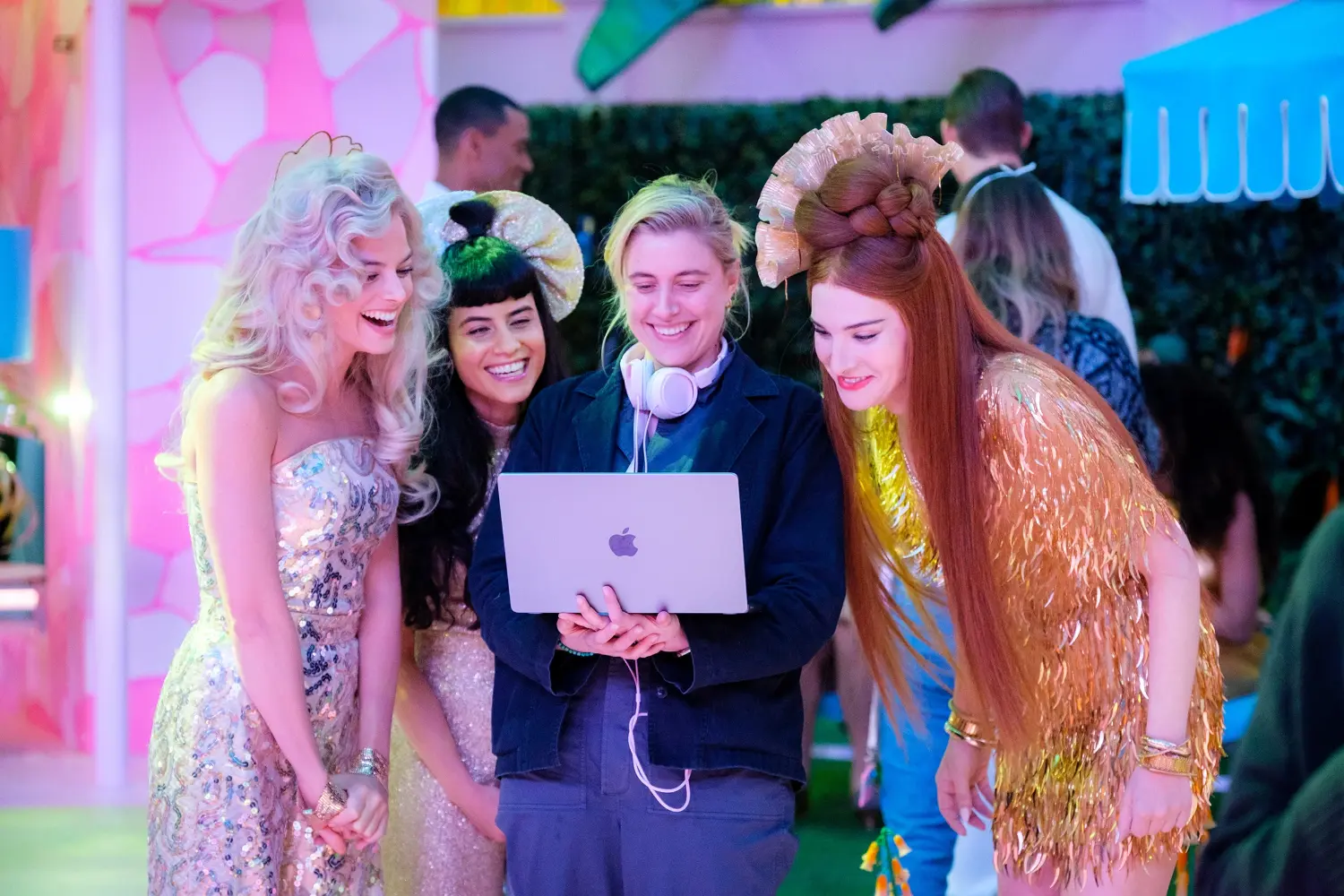
In terms of international reputation, the Oscars is undoubtedly the most renowned film award in the world. Due to its high prestige, it is difficult to perceive being nominated for and winning an Oscar simply as a commendation of the actors’ professionalism and achievement in the arts. The Oscars are also an indicator of Hollywood's ideologies. Following the flak in 2015 and 2016 for the glaring lack of diversity in nominations (as only white actors were nominated), the Academy of Motion Picture Arts and Sciences (AMPAS) announced a reform that infused diversity into its ranks. Consequently, in the past five years, films delving into racial and minority issues like Green Book, Parasite, Nomadland, CODA, and Everything Everywhere All at Once clinched the Best Picture accolade, ostensibly signaling a surge in diversity at the Oscars. However, the recent unveiling of nominations for the 96th Oscars hints that the touted diversity reform may not be as radical as it appears to be.
The 96th Oscar nominee that caused the biggest stir was Barbie - the hit film of 2023 which portrays Barbie's discovery of the truth about patriarchy and her search for life's meaning in the real world. Strangely, it was one of the ten nominees for Best Picture but was not nominated for Best Director and Best Actress. Ryan Gosling, the embodiment of Ken, managed to get a nod for Best Supporting Actor. Despite garnering a total of eight Oscar nominations (with I’m Just Ken and What Was I Made For? nominated for Best Original Song), Barbie’s peculiar distribution of acclaim in pivotal award categories has left many, including its creators, "kenfused".
Both Gosling and America Ferrera (who was nominated for Best Supporting Actress) have expressed their thoughts about the omission of Barbie’s director Greta Gerwig and its main lead Margot Robbie from nominations for individual awards. "I was incredibly disappointed that they weren’t nominated," Ferrera said. Meanwhile, Gosling stated that "there is no Ken without Barbie, and there is no Barbie movie without Greta Gerwig and Margot Robbie." He believes that both women are "most responsible for this history-making, globally-celebrated film." Gosling added, "To say that I'm disappointed that they are not nominated in their respective categories would be an understatement." As a viewer of this epoch-making film, I began musing about a question amid my disappointment: why does the Oscar committee acknowledge Barbie as a cinematic pinnacle of 2023 but not nominate the key female creators of the film, particularly its director?
It's indisputable that Barbie is presently a groundbreaking cinematic piece. Irrespective of its accolades, Barbie and the social impact that it sparked have left an indelible mark on Hollywood and the history of filmmaking by women. This article focuses on Barbie's exclusion from the nominations for Best Director and Best Actress at the Oscars and not whether it deserves these two awards. When discussing the former, we are compelled to ponder whether the Oscar nominations and victories embody impartiality, professionalism, legitimacy, and rationality. Steering the discourse back to the Oscar-worthiness of Barbie's leading lady and director propels us back into the realm of gauging professionalism and artistic merit. An assumed caveat of such discussions is that Oscar nods and triumphs are strictly about professionalism and artistry, a notion that might not entirely encapsulate the truth.

Demystifying Oscar Nominations
AMPAS currently boasts a colossal membership exceeding 10,000, and its members are strategically divided into 17 branches, representing the different disciplines of the film industry. These branches, spanning from actors and executives to marketing and public relations professionals, hold the reins in determining the nominations within their respective domains. For example, the directors’ branch nominates fellow directors while actors vouch for their peers. The egalitarian power to nominate for Best Picture is bestowed upon all members. Once voting within each of the 17 branches is completed, PricewaterhouseCoopers steps in and employs a labyrinthine system to calculate the results and narrow down to the final five nominees for each category (ten for Best Picture). When the nominations are unveiled, the entire membership exercises their voting rights to anoint the victors for all awards, with the nominee securing the most votes claiming the coveted prize. The procedures governing Best Picture and Best International Feature Film will be dissected in subsequent articles as they tend to be even more labyrinthine.
This insight into the nomination procedures demystifies the frequent discrepancies between the nominations and actual awards received. A film might ascend to the pinnacle of Best Picture glory yet find itself missing out on Best Director, and vice versa. Take, for instance, Atonement. It basked in the glory of a Best Picture nomination during the 80th Oscars but its maestro, Joe Wright, was excluded from the Best Director roster. This system, to a certain extent, elucidates why Barbie missed out on the nominations for Best Director and Best Actress. However, it does not explain why Barbie was not nominated for the two key awards, instead of the other movies. If we settle for this seemingly impeccable and logical explanation, we are still thinking in line with the established rules of the Oscars. Examining the logic behind these rules will mean that the outcomes are appropriate, reasonable, and in agreement with the rules no matter what. Rather than studying them, we perhaps need to understand who designs the game rules and who influences the game.
Women and the Oscars
According to the Los Angeles Times, women constituted 33% of AMPAS members in 2021. In 2012, it was reported that a staggering 94% of Oscar voters were white and 77% were male. The "GENDER at the Oscars" report by the Annenberg Inclusion Initiative summarized the prevalence of female nominees and winners at the Oscars since 1929. It indicated that, as of the 95th Oscars in 2023, women made up a mere 17% of the 13,253 nominees throughout the entire history of the Academy Awards, while men held a dominating share of 83%. Plus, only 16% of Oscars were awarded to women. The Best Director category was even more disheartening, as women secured only 2% of all nominations. To be more specific, only 8 out of the 476 nominees were females (Gerwig representing Lady Bird was also one of them), and ultimately only three of them won. Shockingly, in the history of the Oscars, there were 88 Oscar ceremonies without a female nominee for Best Director. 2021 was a groundbreaking year as the Oscars witnessed the nomination of two women for Best Director. It was also the year with the highest number of female nominees at the Oscars at 66, which made up 33% of all nominees. Coincidentally, the proportion of women in the Academy that year was also 33% — maybe that didn’t happen by chance after all.
Now, let's break things down. Many, including myself, will surely not be so naive as to assume that women, who constitute half of the world's population, would bag an equal share of Oscar nods and triumphs. But the actual figures are “kenfusing”. With men holding sway over 60% of the Academy’s membership, or rather, with men calling the shots at the Oscars, it's no surprise it remains a male-dominated bastion. Little wonder, Barbie got snubbed for Best Director. It begs the question: can the Oscars genuinely provide a level playing field for women's creations? To put it bluntly, gender bias and gender-based neglect of women do not exist in these male-centric awards. The idea of anticipating unbiased, equitable, and sensible evaluations of women's works sounds more like a fairy tale.

And let's not even get started on the solo female contender for Best Director this year, Justine Triet. Similar to Barbie, her film Anatomy of a Fall is also a work of a female director and delves into women's experiences. However, based on cinematic traditions, Anatomy of a Fall has a more artsy vibe and what’s more, it even clinched the Palme d'Or at the 2023 Cannes Film Festival. It is certainly far-fetched for me to assert that the Oscars operate on a one-woman quota for Best Director. But, considering how it made history by nominating two females for Best Director, I can’t help but think that the directors’ branch of the Academy seemingly deems one female nominee acceptable, but two spell redundancy. Perhaps in this two-choice-one game, Triet made the cut while Gerwig got the boot, despite her previous nomination.
Finally, given the longstanding neglect and belittling of female creators and works by women at the Oscars and across the entire film industry, coupled with the exclusion of Barbie from the nominations for Best Director and Best Actress on the pretext that its director and leading lady are less capable than others, gender-based double standards do exist to a great extent. It is an egg-vs-stone face-off. By standing on the side of the stone, one is unwaveringly adhering to the game rules set by the big shots. As Barbie begins to question the legitimacy of her world, Barbieland, and as all the other Barbies come to their senses, see through Ken's game, and bust myths about men and horses, we can certainly go further in life than them in this well disguised patriarchal world.
Reference
“GENDERat the Oscars® - Women nominees and winners across 95 years at the Academy Awards®” https://www.inclusionlist.org/oscars/gender


 Log in
Log in

No comments yet,
be the first one to comment!